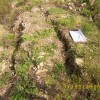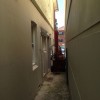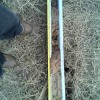During any proposed development the most difficult portion of the works to change or alter is the ground conditions prior to the development.
The impact of soft sediments, water tables, reactive clays or hard rock can have huge cost implications and result in costly delays during excavation and construction if they are unknown or not planned for. Geotechnical site investigations conducted prior to final design and construction provide detailed data on the actual site conditions to allow optimal design and construction of structures within the client’s budget.




